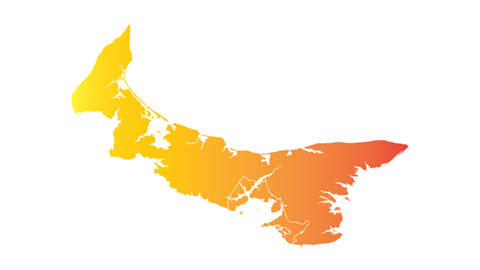Northwest Territories
Critical minerals, policy, and the energy transition
The Energy Transition in Northwest Territories, Canada
Located in northern Canada, the Northwest Territories (NWT) is a region of unsurpassed natural beauty and promising opportunities. With its rugged terrain, abundant resources, and diverse cultural heritage, the NWT is a focal point for Canada's transition to sustainable energy practices and exploration of critical minerals. The NWT is uniquely positioned as the world shifts towards renewable energy solutions and demand for essential minerals increases. It has abundant renewable energy sources, including hydroelectric power, solar energy, and wind resources, significantly contributing to Canada's clean energy initiatives. The NWT's expansive and diverse geological landscape also contains significant mineral deposits, including diamonds, gold, rare earth elements, and other vital minerals. These resources are essential to various industries such as electronics, renewable energy, and transportation, and present lucrative opportunities for economic growth and diversification. The NWT is committed to environmental conservation, sustainable development, and collaboration with Indigenous communities.
Northwest Territories energy revolution
The Northwest Territories (NWT) is undergoing a major energy transformation, driven by a commitment to reducing dependence on fossil fuels, strengthening energy security, and promoting sustainable development. At the heart of this shift is the 2030 Energy Strategy, which sets out a long-term vision for affordable, reliable, and clean energy across the territory. This strategy is delivered through rolling three-year Energy Action Plans, the most recent being the 2022–2025 plan. It includes 68 targeted initiatives designed to cut greenhouse gas emissions by 51 kilotonnes by 2025. NWT’s energy transition takes a multi-faceted approach, combining renewable energy development, hydroelectric expansion, community-led projects, and strong federal support.
Renewable energy projects
The NWT is leveraging its unique geography and resources to advance renewable energy. Solar energy is a key focus, with projects like the 1-megawatt solar farm in Inuvik developed by Nihtat Energy Ltd. This project is expected to reduce diesel costs by $1 million annually and cut greenhouse gas emissions by 380,000 metric tons per year. Additionally, hybrid solar-diesel systems are being piloted in remote communities to reduce diesel consumption during peak sunlight periods. Wind energy is also being explored, with the Inuvik Wind Project already operational as part of the 2030 Energy Strategy.
Hydroelectric expansion and transmission lines
Hydroelectric power remains a cornerstone of the NWT’s energy mix, with two hydro-based grids supplying the majority of the territory’s electricity. The Taltson Hydro Expansion project, supported by a $25 million federal investment, aims to enhance hydroelectric capacity and reduce reliance on diesel in remote communities. Long-term projects like transmission lines are expected to deliver significant emissions reductions once commissioned after 2025.
Community and Indigenous-led initiatives
Indigenous communities are playing a pivotal role in the energy transition. The Délı̨nę Got’ı̨nę Government is developing a community energy plan that includes solar installations and low-head hydro technology. Similarly, Delta Enterprise Inc is working on improving biomass supply chains in Inuvik, while Dinjii Zhuh Solutions is implementing energy-efficient upgrades to homes in Fort McPherson.
Federal support and funding
The Canadian government has been instrumental in supporting the NWT’s energy revolution. Programs like the Clean Energy for Rural and Remote Communities have allocated over $11 million for clean energy projects in Indigenous communities, with $3.7 million directed to NWT initiatives. Budget 2023 also includes measures to reduce diesel reliance, such as funding for the Ikayuut Solar Project.
Geothermal exploration
The ADK Geothermal Development project in Fort Liard represents a groundbreaking step in diversifying the territory’s energy sources. By exploring geothermal energy, the project aims to reduce diesel dependency, lower energy costs, and create economic opportunities for the community.
Energy efficiency and electrification
Efforts to improve energy efficiency are also underway, with initiatives to increase building efficiency by 15% and expand electric vehicle infrastructure, including a fast charger corridor between Yellowknife and the NWT-Alberta border. These measures are part of a broader strategy to electrify transportation and reduce emissions from the sector.


Critical Minerals produced in Northwest Territories
Join us at SFA (Oxford)'s Critical Minerals events
Join us in person or online from the Northwest Territories for SFA (Oxford)’s latest Critical Minerals events, focused on the key materials driving the energy transition and low-carbon technologies. Connect with global leaders, government, investors, miners, end users, and key players across the supply chain and recycling sector, and stay ahead of the trends shaping the battery metals and PGM markets. Register today to secure your place.




Essential minerals production and products in Northwest Territories
The journey of Canada's critical minerals
Canada's renewable energy progress hinges on crucial minerals like lithium, nickel and cobalt, PGMs, rare earths, and minor metals, essential for low carbon and future technologies supported by sustainable mining and innovation policies. This strategy underscores the importance of these minerals in achieving a future of sustainability and energy security. Discover how these critical minerals are pivotal to Canada's sustainable energy transition.


Meet the Critical Minerals team
Trusted advice from a dedicated team of experts.

Henk de Hoop
Chief Executive Officer

Beresford Clarke
Managing Director: Technical & Research

Jamie Underwood
Principal Consultant

Ismet Soyocak
ESG & Critical Minerals Lead

Rj Coetzee
Senior Market Analyst: Battery Materials and Technologies

How can we help you?
SFA (Oxford) provides bespoke, independent intelligence on the strategic metal markets, specifically tailored to your needs. To find out more about what we can offer you, please contact us.















